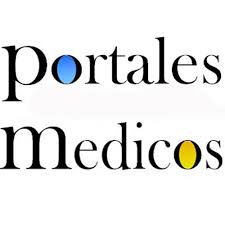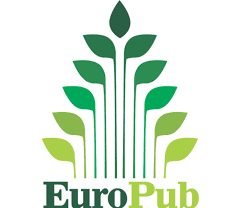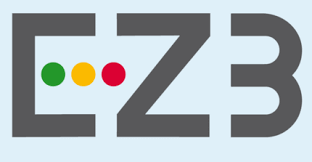Patogénesis de las manifestaciones neuropsiquiátricas en COVID-19.
Pathogenesis of neuropsychiatric manifestations in COVID-19
Resumen
En la actual pandemia por SARS-CoV-2, cada vez son más comunes y frecuentes las manifestaciones neurológicas y psiquiátricas. Los coronavirus tienen la capacidad de infectar neuronas y células gliales, es decir, presentan neurotropismo. Objetivo: Explorar la evidencia científica mundial y concreta sobre el neurotropismo y los mecanismos de patogénesis de las manifestaciones neurológicas y psiquiátricas descritos recientemente en la COVID-19. Metodología: enfoque cualitativo, de tipo exploratorio y diseño no experimental, documental y de corte transversal. Las referencias para esta revisión se obtienen mediante búsquedas en PubMed de artículos científicos publicados entre 2004 y 2020. Discusión: La COVID-19 tiene formas de presentación variables impredecibles. El desenlace y la severidad son mayores en pacientes con comorbilidades no tratadas y no controladas. Conclusiones: Los síntomas neuropsiquiátricos en la COVID-19 pueden iniciar antes que los síntomas respiratorios, y, presentarse en ausencia de clínica respiratoria y estudios imagenológicos de tórax sin lesiones aparentes. Recomendaciones: Emplear el RT-PCR como método diagnóstico, valoración periódica por neurología y estudios de neuroimagen seriados en usuarios con COVID-19 grave. Valoración mental y psicológica continúa en el personal de salud, casos confirmados, casos en remisión o de reincidencia.
In the current SARS-CoV-2 pandemic, neurological and psychiatric manifestations are becoming more common and frequent. Coronaviruses have the ability to infect neurons and glial cells, that is, they present neurotropism. Objective: Explore scientific evidence on the pathogenesis mechanisms of neurological and psychiatric manifestations in COVID-19. Methodology: qualitative approach, exploratory and non-experimental, documentary and cross-sectional design. References for this review are obtained by searching PubMed for scientific articles published between 2004 and 2020. Discussion: COVID-19 has unpredictable variable forms of presentation. The outcome and severity is greater in patients with untreated and uncontrolled comorbidities. Conclusions: Neuropsychiatric symptoms in COVID-19 can begin earlier than respiratory symptoms, and present in the absence of respiratory symptoms and chest imaging studies without apparent lesions. Recommendations: Use RT-PCR as diagnostic method, periodic evaluation by neurology and serial neuroimaging studies in users with severe COVID-19. Continuous mental and psychological evaluation in the health personnel, confirmed cases, cases in remission or recidivism.
Palabras clave
Texto completo:
PDFReferencias
Abiodun, O., y Ola, M. (2020). Role of brain renin angiotensin system in neurodegeneration: An update. Saudi journal of biological sciences, 27(3), 905–912. https://doi.org/10.1016/j.sjbs.2020.01.026
Ahmad, I., y Rathore, F. (2020). Neurological manifestations and complications of COVID-19: A literature review. Journal of clinical neuroscience: official journal of the Neurosurgical Society of Australasia, 77, 8–12. https://doi.org/10.1016/j.jocn.2020.05.017
Ahmed, M., Hanif, M., Ali, M., Haider, M., Kherani, D., Memon, G., Karim, A., y Sattar, A. (2020). Neurological Manifestations of COVID-19 (SARS-CoV-2): A Review. Frontiers in neurology, 11, 518. https://doi.org/10.3389/fneur.2020.00518
Alenina, N., y Bader, M. (2019). ACE2 in Brain Physiology and Pathophysiology: Evidence from Transgenic Animal Models. Neurochemical research, 44(6), 1323–1329. https://doi.org/10.1007/s11064-018-2679-4
Baig, A., Khaleeq, A., Ali, U., y Syeda, H. (2020). Evidence of the COVID-19 Virus Targeting the CNS: Tissue Distribution, Host-Virus Interaction, and Proposed Neurotropic Mechanisms. ACS chemical neuroscience, 11(7), 995–998. https://doi.org/10.1021/acschemneuro.0c00122
Blaess, M., Kaiser, L., Sauer, M., Csuk, R., y Deigner, H. (2020). COVID-19/SARS-CoV-2 Infection: Lysosomes and Lysosomotropism Implicate New Treatment Strategies and Personal Risks. International journal of molecular sciences, 21(14), 4953. https://doi.org/10.3390/ijms21144953
Bohlken, J., Schömig, F., Lemke, M., Pumberger, M., y Riedel-Heller, S. (2020). COVID-19-Pandemie: Belastungen des medizinischen Personals [COVID-19 Pandemic: Stress Experience of Healthcare Workers - A Short Current Review]. Psychiatrische Praxis, 47(4), 190–197. https://doi.org/10.1055/a-1159-5551
Bohmwald, K., Gálvez, N., Ríos, M., y Kalergis, A. (2018). Neurologic Alterations Due to Respiratory Virus Infections. Frontiers in cellular neuroscience, 12, 386. https://doi.org/10.3389/fncel.2018.00386
Chen, N., Zhou, M., Dong, X., Qu, J., Gong, F., Han, Y.,… Zhang, L. (2020). Epidemiological and clinical characteristics of 99 cases of 2019 novel coronavirus pneumonia in Wuhan, China: a descriptive study. Lancet (London, England), 395(10223), 507–513. https://doi.org/10.1016/S0140-6736(20)30211-7.
Chen, R., Wang, K., Yu, J., Chen, Z., Wen, C., y Xu, Z. (2020). The spatial and cell-type distribution of SARS-CoV-2 receptor ACE2 in human and mouse brain. BioRxiv. https://doi.org/10.1101/2020.04.07.030650.
Conde, G., Quintana, L., Quintero, I., Ramos, Y., y Moscote, L. (2020). Neurotropism of SARS-CoV 2: Mechanisms and manifestations. Journal of the neurological sciences, 412, 116824. https://doi.org/10.1016/j.jns.2020.116824
Desforges, M., Le Coupanec, A., Brison, E., Meessen-Pinard, M. y Talbot, P. (2014). Neuroinvasive and neurotropic human respiratory coronaviruses: potential neurovirulent agents in humans. Advances in experimental medicine and biology, 807, 75–96. https://doi.org/10.1007/978-81-322-1777-0_6
Desforges, M., Le Coupanec, A., Dubeau, P., Bourgouin, A., Lajoie, L., Dubé, M. y Talbot, P. (2019). Human Coronaviruses and Other Respiratory Viruses: Underestimated Opportunistic Pathogens of the Central Nervous System? Viruses, 12(1), 14. https://doi.org/10.3390/v12010014
Desforges, M., Le Coupanec, A., Stodola, J., Meessen-Pinard, M., y Talbot, P. (2014). Human coronaviruses: viral and cellular factors involved in neuroinvasiveness and neuropathogenesis. Virus research, 194, 145–158. https://doi.org/10.1016/j.virusres.2014.09.011
Dinakaran, D., Manjunatha, N., Naveen, C., y Suresh, B. (2020). Neuropsychiatric aspects of COVID-19 pandemic: A selective review. Asian journal of psychiatry, 53, 102188. Advance online publication. https://doi.org/10.1016/j.ajp.2020.102188
Dugue, R., Cay-Martínez, K., Thakur, K., Garcia, J., Chauhan, L., Williams, S.,…Mishra, N. (2020). Neurologic manifestations in an infant with COVID-19. Neurology, 94(24), 1100–1102. https://doi.org/10.1212/WNL.0000000000009653
Ellul, M., Benjamin, L., Singh, B., Lant, S., Michael, B.., Easton, A.,…Solomon, T. (2020). Neurological associations of COVID-19. The Lancet. Neurology, 19 (9), 767–783. https://doi.org/10.1016/S1474-4422(20)30221-0
Fernández, I. (2020). RAAS inhibitors do not increase the risk of COVID-19. Nature reviews. Cardiology, 17(7), 383. https://doi.org/10.1038/s41569-020-0401-0
Garnero, M., Del Sette, M., Assini, A., Beronio, A., Capello, E., Cabona.,…Benedetti, L. (2020). COVID-19-related and not related Guillain-Barré syndromes share the same management pitfalls during lock down: The experience of Liguria region in Italy. Journal of the neurological sciences, 418, 117114. Advance online publication. https://doi.org/10.1016/j.jns.2020.117114
Gu, J., Gong, E., Zhang, B., Zheng, J., Gao, Z., Zhong, Y.,…Leong, A. (2005). Multiple organ infection and the pathogenesis of SARS. The Journal of experimental medicine, 202(3), 415–424. https://doi.org/10.1084/jem.20050828.
Gutiérrez, C., Méndez, A., Rodrigo, S., San Pedro, E., Bermejo, L., Gordo, R., de Aragón, F., y Benito, J. (2020). Miller Fisher syndrome and polyneuritis cranialis in COVID-19. Neurology, 95(5), e601–e605. https://doi.org/10.1212/WNL.0000000000009619.
Hamming, I., Timens, W., Bulthuis, M., Lely, A., Navis, G., y van Goor, H. (2004). Tissue distribution of ACE2 protein, the functional receptor for SARS coronavirus. A first step in understanding SARS pathogenesis. The Journal of pathology, 203(2), 631–637. https://doi.org/10.1002/path.1570
Helms, J., Kremer, S., Merdji, H., Clere-Jehl, R., Schenck, M., Kummerlen, C.,…Meziani, F. (2020). Neurologic Features in Severe SARS-CoV-2 Infection. The New England journal of medicine, 382(23), 2268–2270. https://doi.org/10.1056/NEJMc2008597
Hoffmann, M., Kleine-Weber, H., Schroeder, S., Krüger, N., Herrler, T., Erichsen, S.,…Pöhlmann, S. (2020). SARS-CoV-2 Cell Entry Depends on ACE2 and TMPRSS2 and Is Blocked by a Clinically Proven Protease Inhibitor. Cell, 181(2), 271–280.e8. https://doi.org/10.1016/j.cell.2020.02.052
Kotfis, K., Williams, S., Wilson, J., Dabrowski, W., Pun, B., y Ely, E. (2020). COVID-19: ICU delirium management during SARS-CoV-2 pandemic. Critical care (London, England), 24(1), 176. https://doi.org/10.1186/s13054-020-02882-x
Kuba, K., Imai, Y., Rao, S., Gao, H., Guo, F., Guan, B.,…Penninger, J. (2005). A crucial role of angiotensin converting enzyme 2 (ACE2) in SARS coronavirus-induced lung injury. Nature medicine, 11(8), 875–879. https://doi.org/10.1038/nm1267
Lan, J., Ge, J., Yu, J., Shan, S., Zhou, H., Fan, S.,…Wang, X. (2020). Structure of the SARS-CoV-2 spike receptor-binding domain bound to the ACE2 receptor. Nature, 581(7807), 215–220. https://doi.org/10.1038/s41586-020-2180-5
Li, H., Xue, Q., y Xu, X. (2020). Involvement of the Nervous System in SARS-CoV-2 Infection. Neurotoxicity research, 38(1), 1–7. https://doi.org/10.1007/s12640-020-00219-8.
Mao, L., Jin, H., Wang, M., Hu, Y., Chen, S., He, Q.,…Hu, B. (2020). Neurologic Manifestations of Hospitalized Patients with Coronavirus Disease 2019 in Wuhan, China. JAMA neurology, 77(6), 1–9. Advance online publication. https://doi.org/10.1001/jamaneurol.2020.1127
Moriguchi, T., Harii, N., Goto, J., Harada, D., Sugawara, H., Takamino, J.,…Shimada, S. (2020). A first case of meningitis/encephalitis associated with SARS-Coronavirus-2. International journal of infectious diseases: IJID: official publication of the International Society for Infectious Diseases, 94, 55–58. https://doi.org/10.1016/j.ijid.2020.03.062
Oxley, T., Mocco, J., Majidi, S., Kellner, C., Shoirah, H., Singh, I.,…Fifi, J. (2020). Large-Vessel Stroke as a Presenting Feature of Covid-19 in the Young. The New England journal of medicine, 382(20), e60. https://doi.org/10.1056/NEJMc2009787
Paniz-Mondolfi, A., Bryce, C., Grimes, Z., Gordon, R., Reidy, J., Lednicky, J., Sordillo, E., y Fowkes, M. (2020). Central nervous system involvement by severe acute respiratory syndrome coronavirus-2 (SARS-CoV-2). Journal of medical virology, 92(7), 699–702. https://doi.org/10.1002/jmv.25915
Poyiadji, N., Shahin, G., Noujaim, D., Stone, M., Patel, S., y Griffith, B. (2020). COVID-19-associated Acute Hemorrhagic Necrotizing Encephalopathy: Imaging Features. Radiology, 296(2), E119–E120. https://doi.org/10.1148/radiol.2020201187
Sedaghat, Z., y Karimi, N. (2020). Guillain Barre syndrome associated with COVID-19 infection: A case report. Journal of clinical neuroscience: official journal of the Neurosurgical Society of Australasia, 76, 233–235. https://doi.org/10.1016/j.jocn.2020.04.062
Templeton, S., Kim, T., O'Malley, K., y Perlman, S. (2008). Maturation and localization of macrophages and microglia during infection with a neurotropic murine coronavirus. Brain pathology (Zurich, Switzerland), 18(1), 40–51. https://doi.org/10.1111/j.1750-3639.2007.00098.x.
Vaduganathan, M., Vardeny, O., Michel, T., McMurray, J., Pfeffer, M., y Solomon, S. (2020). Renin-Angiotensin-Aldosterone System Inhibitors in Patients with Covid-19. The New England journal of medicine, 382(17), 1653–1659. https://doi.org/10.1056/NEJMsr2005760
Vindegaard, N., y Benros, M. (2020). COVID-19 pandemic and mental health consequences: Systematic review of the current evidence. Brain, behavior, and immunity, S0889-1591(20)30954-5. Advance online publication. https://doi.org/10.1016/j.bbi.2020.05.048
Wan, Y., Shang, J., Graham, R., Baric, R., y Li, F. (2020). Receptor Recognition by the Novel Coronavirus from Wuhan: an Analysis Based on Decade-Long Structural Studies of SARS Coronavirus. Journal of virology, 94(7), e00127-20. https://doi.org/10.1128/JVI.00127-20
Yan, C., Faraji, F., Prajapati, D., Boone, C., y DeConde, A. (2020). Association of chemosensory dysfunction and COVID-19 in patients presenting with influenza-like symptoms. International forum of allergy y rhinology, 10(7), 806–813. https://doi.org/10.1002/alr.22579
Yan, R., Zhang, Y., Li, Y., Xia, L., Guo, Y., y Zhou, Q. (2020). Structural basis for the recognition of SARS-CoV-2 by full-length human ACE2. Science (New York, N.Y.), 367(6485), 1444–1448. https://doi.org/10.1126/science.abb2762
Zhao, H., Shen, D., Zhou, H., Liu, J., y Chen, S. (2020). Guillain-Barré syndrome associated with SARS-CoV-2 infection: causality or coincidence? The Lancet. Neurology, 19(5), 383–384. https://doi.org/10.1016/S1474-4422(20)30109-5
Zhou, Z., Kang, H., Li, S., y Zhao, X. (2020). Understanding the neurotropic characteristics of SARS-CoV-2: from neurological manifestations of COVID-19 to potential neurotropic mechanisms. Journal of neurology, 267(8), 2179–2184. https://doi.org/10.1007/s00415-020-09929-7
Zubair, A., McAlpine, L., Gardin, T., Farhadian, S., Kuruvilla, D., y Spudich, S. (2020). Neuropathogenesis and Neurologic Manifestations of the Coronaviruses in the Age of Coronavirus Disease 2019: A Review. JAMA neurology, 10.1001/jamaneurol.2020.2065. Advance online publication. https://doi.org/10.1001/jamaneurol.2020.2065
Enlaces refback
- No hay ningún enlace refback.
Depósito Legal Electrónico: ME2016000090
ISSN Electrónico: 2610-797X
DOI: https://doi.org/10.53766/GICOS
| Se encuentra actualmente registrada y aceptada en las siguientes base de datos, directorios e índices: | |||
 | |||
 |  |  |  |
 |  | ||
 |  |  |  |
 |  |  |  |
 |  |  |  |
 |  |  |  |
![]()
Todos los documentos publicados en esta revista se distribuyen bajo una
Licencia Creative Commons Atribución -No Comercial- Compartir Igual 4.0 Internacional.
Por lo que el envío, procesamiento y publicación de artículos en la revista es totalmente gratuito.

